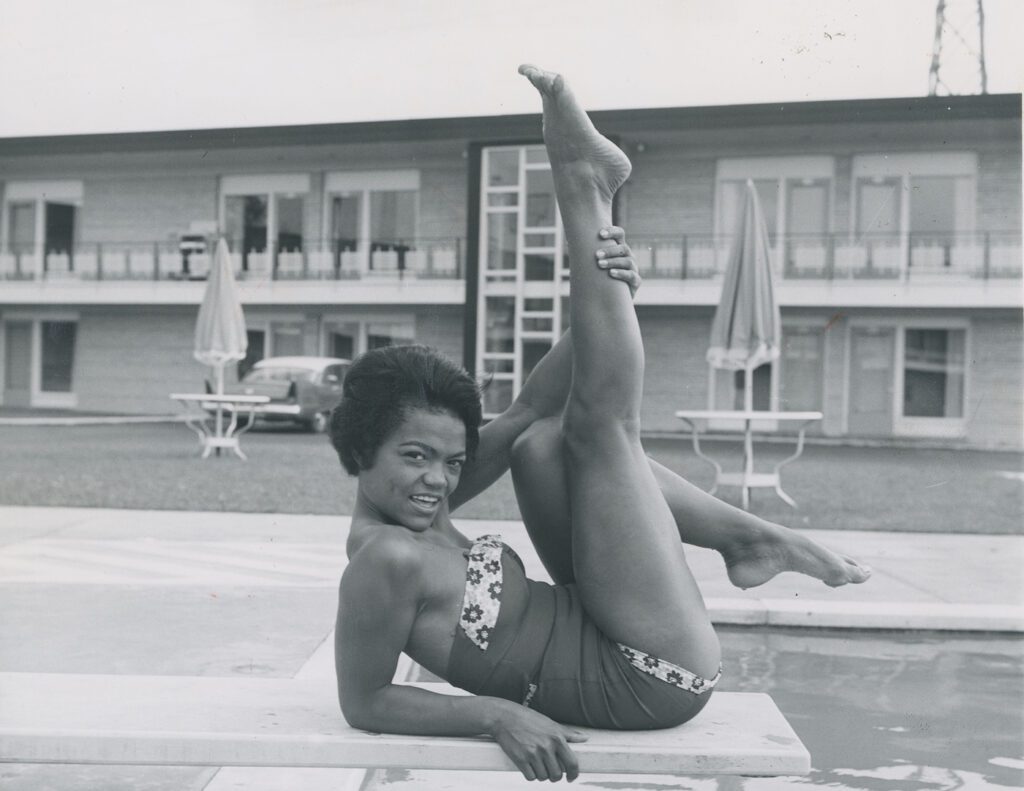Gropius Bau, Berlin, Germany
25 Apr 2019 - 28 Jul 2019

Isaac Sutton, n.d. (Detail) Courtesy: Johnson Publishing Company, LLC. All rights reserved.
Theaster Gates has conceived a participatory exhibition highlighting the works of two photographers, Moneta Sleet Jr. and Isaac Sutton, which is on display on the first floor of the Gropius Bau. The project explores the fundamental legacy of Johnson Publishing Company archives, which feature more than 4 million images and have contributed to shape the aesthetic and cultural languages of the contemporary African American identity.
“For this show, I hope to tease out the creation of female iconic moments by Sleet and Sutton and also offer small forays into the lives of everyday people through never-before-seen images from the Johnson Collection,” stated Gates. “The archives speak about beauty and black female power. Today it seems to me a good time to dig into the visual lexicon of the American book and show images that are rarely seen outside of my community.”
Founded by John H. Johnson in 1942, his eponymous publishing company created two landmark publications for black American audiences: the monthly magazine Ebony and its weekly sister outlet Jet, whose publication was respectively initiated in 1945 and in 1951. Ebony and Jet were committed to both celebrating positive everyday events and depicting the complex realities black Americans faced in postwar USA. The magazines quickly became two of the major platforms for the representation and discussion of black culture, covering a broad range of events and personalities from historic milestones such as the March on Washington in 1963 and the first African-American astronaut to sports icons and show business celebrities. Their visual language reflected a mid-century modern aesthetic filtered through the lens of black life. This wide collection of images helps to illuminate the richness of African American professional codes, modes of dress, social structures, domestic lives and forms of beauty and glamour.
Through a participatory exhibition format conceived by Theaster Gates, Sleet and Sutton’s images representing the gamut of Black American standard social elite and celebrity narration to politics, self-help, sports, beauty and sexuality will be displayed in different cabinets. Many frames display images of Black women, actresses and models, while others show the reverse of photographs, revealing information on their location, date and photographer. The audience will be invited to freely explore this extensive visual archive by pulling out and contemplating single frames from the cabinets or moving the images to be on display outside of them, highlighting their choice of photographs to other visitors. At the Gropius Bau, Vaginal Davis, Mac Folkes and Wu Tsang will each choose their own way of engaging with the presented works.
The Black Image Corporation displays 10 large format prints realized by Sleet and Sutton and selected by Gates, as well as 112 photographs in four especially conceived cabinets. Within this set-up, visitors will be able to browse and read original copies of Ebony and Jet magazines. Michigan Avenue In Full Bloom (2018), a video shot by Gates and documenting the real architectural spaces where the offices were located, will be displayed in the show.
Theaster Gates’ ongoing inquiry of the archive of the Johnson Publishing Company answers the interest of the programme of Gropius Bau in archives as a format of research of the past and present with a contemporary perspective.
Moneta Sleet Jr. (1926–1996) was the first African-American man to win the Pulitzer Prize in 1969. Sleet began working for Ebony magazine in 1955. Over the next 41 years, he captured photos of young Muhammad Ali, Dizzy Gillespie, Stevie Wonder, and Billie Holiday, among others, and many civil rights leaders including Martin Luther King Jr. and Malcolm X.
Isaac Sutton (1923–1995) was a staff photographer for Johnson Publishing Company and worked on both photo-journalism projects and Ebony Fashion Fair, a traveling fashion show, organized by Eunice Walker Johnson. From 1975 he became the chief photographer of Johnson Publishing Company’s West Coast Bureau in Los Angeles and during his 42 years with JPC he developed a special, intimate friendship with some of the most famous names in show business.
Theaster Gates’s practice embraces a wide range of disciplines and a variety of artistic vocabularies – sculpture, painting, installation art, music and performance – as well as urban development and social practice. Starting on the South Side of Chicago, St. Louis and Omaha where his first initiatives on art and social activism took place, he has subsequently advised individuals and organizations in other US cities (Detroit, Akron, and Gary, to name just a few) on how to conceive and carry out initiatives aiming to regenerate deprived urban areas by merging pragmatism and creativity, urban planning and “artistic gestures.” Internationally, Theaster Gates has also reflected on the capacity of art to renew traditions, upraise connectivity among communities or set up dialogues and exchange cultural heritage among cities through his projects, such as those in Istanbul, Bristol, Kassel or Paris. Some of his propositions have generated solid institutions, such as the Rebuild Foundation. Currently, Theaster Gates is Distinguished Visiting Artist and Director of Artist Initiatives at the Lunder Institute for American Art, Waterville, Maine.
The Black Image Corporation is initiated and organised by Fondazione Prada, Milano. The exhibition is conceived by Theaster Gates and curated by Mario Mainetti and Daisy Desrosiers.